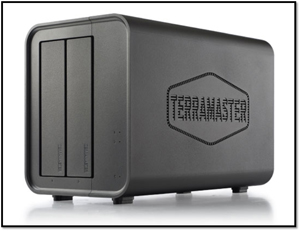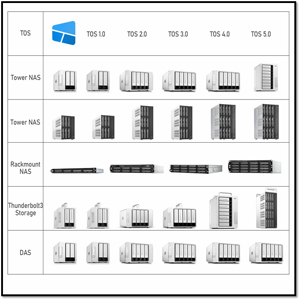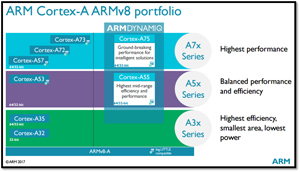How-To
TerraMaster F2-212: A Low-Cost Home and Lab Personal Cloud Solution
Tom checks its suitability for the mass storage and protection of his home and lab files and data.
I have a few problems: I have far too many files on far too many devices; I need to access these files remotely; and, on top of that, my home lab uses a decade-old Dell 620 server running ESXi with local drives that are starting to age out and fail.
So I jumped at the chance when TerraMaster asked if I wanted to review the newest network-attached storage (NAS), the TerraMaster F2-212. I saw it as an economical way to consolidate and reorganize my home media and documents, provide private cloud file access and have a safe place to back up my virtual machines (VM).
I am familiar with TerraMaster as, about a year ago, I set up a TerraMaster F5-221 for my brother and did a write-up on it for Virtualization and Cloud Review. He has used it for media and document storage since then without any issues.
In this series of articles, I will look at the specs of the F2-212 and then see if such a low-priced device (about $170, without drives) is suitable for the mass storage and protection of my home and lab files and data. I will also push it beyond its intended use and try to use it as shared storage for running virtual machines (VM) for my home lab. I will populate the device with an 8GB HDD and a 1TB SSD drive.
 [Click on image for larger view.]
[Click on image for larger view.]
Introduction to the T2-212
TerraMaster has been around since 2010 and specializes in moderately priced digital storage products. Over the years, its products have received numerous awards and favorable reviews.
The company offers various NAS appliances, which they refer to as TNAS devices. These devices come in rackmount, tower or small standalone form factors. They run the TerraMaster NAS operating system (TOS), with TOS 5 being its latest release.
 [Click on image for larger view.]
[Click on image for larger view.]
Features
The F2-212 is their latest 2-bay Personal / Home Cloud Storage solution. It came preinstalled with TOS 5.
Before digging into the hardware on the device, let's look at some of its features.
- Ransomware : Yes, ransomware is a huge problem for businesses, but it can also affect individual users. It may be even more insidious for individuals as they do not have the staff or the sophisticated tools to defend themselves against such attacks. To protect against ransomware, TOS 5 has TerraMaster File System Snapshot (TFSS), which takes snapshots of an entire file system. When files get accidentally or purposefully erased, corrupted or encrypted, you can click the snapshot list to recover the data. This mitigates the risk of human error or ransomware attacks and gives you another tool to deal with such events.
- Backups: Not only does TOS 5 support TFSS, but it also supports other backup mechanisms, including Time Machine Backup for macOS systems.
- TerraSync: This is used for synchronizing data between the device and PCs, iOS/Android devices and even other TerraMaster devices.
- CloudSync: Backs up or synchronizes TNAS data with a cloud drive for offsite backup versions and remote accessibility of the data. CloudSync supports the two-way synchronization function of Baidu Cloud, Google Drive, Dropbox, Amazon S3, OneDrive, Pcloud, Backblaze B2 and other cloud drives.
- Duple Backup: Allows one or more offsite backup versions of files to a TNAS, file server or cloud drive.
- File Services Supported: The device supports standard file services and protocols including SMB, NFS, SFTP/FTP, AFP, iSCSI and WebDAV.
- Video and Audio Content Delivery: The device can perform 4K video hardware decoding and is compatible with UPnP/DLNA protocol. It supports Plex, Emby and other multimedia applications to deliver content to PCs, tablets, mobile devices and smart TVs.
Hardware Specifications
The F2-212 is an updated version of TerraMaster's previous entry-level TNAS, the F2-210. You can visit its web site for the complete specifications of the device, but below is a summary of its most exciting features.
TerraMaster updated the F2-212 with a more powerful Realtek 1619B ARM V8.2 Cortex-A55 64-bit quad-core ARM processor that runs at 1.7GHz. The proc has a floating-point unit (FPU), NEON SIMD engine, 1GB DDR4 and video DSP hardware acceleration. It has more powerful 4K video encoding and decoding capabilities. ARM classifies their A55 processors as their highest mid-range processor that balances performance and efficiency.
 [Click on image for larger view.]
[Click on image for larger view.]
It comes with a non-upgradable 1 GB non-ECC DDR4 RAM. It has two drive slots holding 3.5-inch or 2.5-inch SATA SSD or HDD drives. It supports up to 22 TB drives with a total capacity of 44 TB.
For connectivity, it has one RJ-45 1GbE jack, one USB 3.0 and one USB 2.0 port. It does not have a video port or a PCIe slot.
It is 222 x 119 x 154mm and weighs 1.3 kg (for those not on the metric system, that's about 9 inches x 5 inches by 6 inches, and about 2.7 pounds).
It consumes 20.1W with Seagate 4TB ST4000VN008 hard drive(s) in read/write state.
File System Support
It supports CIFS/SMB, AFP, NFS, FTP, SFTP, iSCSI, HTTPS and WebDAV file protocols with up to 100 concurrent connections.
It can have up to 64 internal volumes and 32 ISCSI targets and LUNS.
Initial Thoughts
With its new ARM processor, I believe that the T2-212 will be more than capable of its intended use as a local and private cloud repository for files. I will be interested to see if it can handle the more demanding task of acting as a shared storage device to store and possibly run VMs.
In my upcoming article, I will be unboxing a device, setting it up, configuring it and creating SMB folders to test its file-syncing capabilities. I will also explore how easy it is to access files from remote locations, among other advertised features. Additionally, I intend to set it up as an NFS repository and an iSCSI target to test its backup and running VMs capabilities and explore other use cases that may not have been initially intended.
About the Author
Tom Fenton has a wealth of hands-on IT experience gained over the past 30 years in a variety of technologies, with the past 20 years focusing on virtualization and storage. He previously worked as a Technical Marketing Manager for ControlUp. He also previously worked at VMware in Staff and Senior level positions. He has also worked as a Senior Validation Engineer with The Taneja Group, where he headed the Validation Service Lab and was instrumental in starting up its vSphere Virtual Volumes practice. He's on X @vDoppler.